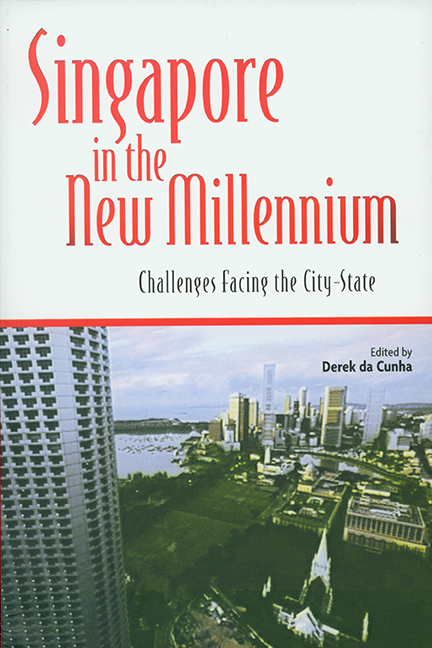Book contents
- Frontmatter
- Contents
- Preface
- Contributors
- 1 The Limits of a City-state: Or Are There?
- 2 External Challenges Facing the Economy
- 3 Governance: Its Complexity and Evolution
- 4 The Future of Civil Society: What Next?
- 5 Relating to the World: Images, Metaphors, and Analogies
- 6 Relating to the World: Images, Metaphors, and Analogies
- 7 Education in the Early 21st Century: Challenges and Dilemmas
- 8 Reframing Modernity: The Challenge of Remaking Singapore
- 9 National Identity, the Arts, and the Global City
- 10 The Media and the Flow of Information
- 11 Conclusion
- Index
5 - Relating to the World: Images, Metaphors, and Analogies
Published online by Cambridge University Press: 21 October 2015
- Frontmatter
- Contents
- Preface
- Contributors
- 1 The Limits of a City-state: Or Are There?
- 2 External Challenges Facing the Economy
- 3 Governance: Its Complexity and Evolution
- 4 The Future of Civil Society: What Next?
- 5 Relating to the World: Images, Metaphors, and Analogies
- 6 Relating to the World: Images, Metaphors, and Analogies
- 7 Education in the Early 21st Century: Challenges and Dilemmas
- 8 Reframing Modernity: The Challenge of Remaking Singapore
- 9 National Identity, the Arts, and the Global City
- 10 The Media and the Flow of Information
- 11 Conclusion
- Index
Summary
Oh, we have been described as aspiring to be various things: Athens, Venice, Switzerland, Israel, Cuba, Red City and Third China… But, having considered all things, it would perhaps be better if Singapore contented itself with being the Singapore of Southeast Asia. Not aiming high perhaps, but then we would be ourselves and that is not a bad thing.
S. Rajaratnam (1985)Self-Image and Others
The policy options for how a small state like Singapore relates to its neighbours and the wider world are fairly well defined. They are based on the assumption that a small state is constrained and vulnerable vis-à-visits larger neighbours and major powers. Its susceptibility to risks and threats are set at a much lower threshold than its larger neighbours. The small state is disadvantaged and weak in a self-help world. The challenge for a small state is how to offsetits vulnerability by increasing its national capacity and international presence. This challenge of being a small state was thrust upon Singapore on August 1965.
Prior to 9 August 1965, Singapore had always been part of a larger entity and related to the world as part of that entity. In 1824, Dr John Crawfurd made Singapore a territory of the East India Company when, as the Company's second Resident Administrator succeeding Colonel William Farquhar, he persuaded Sultan Hussain and his Temenggong to jointly sign away Singapore to the Honourable Company. Before that, Singapore was a part of the Johor-Riau sultanate based in Tanjong Pinang and, earlier, up the Johor River. Even earlier, in the fourteenth century, the Majapahit Empire, from its centre in east Java, claimed Singapore. Singapore became part of the Straits Settlement, together with Pinang and Melaka, starting in 1826, following the dissolution of the East India Company — the nucleus of a British Malaya in an expanding British Empire. In 1942, Lieutenant-General Tomoyuki Yamashita renamed Singapore Syonan, or “Light of the South”, in Japan's Greater East Asian Co-prosperity Sphere. The British eventually reclaimed Singapore as one of its crown colonies and excluded it from the Malayan Union which was to succeed the old British Malaya.
- Type
- Chapter
- Information
- Singapore in the New MillenniumChallenges Facing the City-State, pp. 108 - 132Publisher: ISEAS–Yusof Ishak InstitutePrint publication year: 2002

